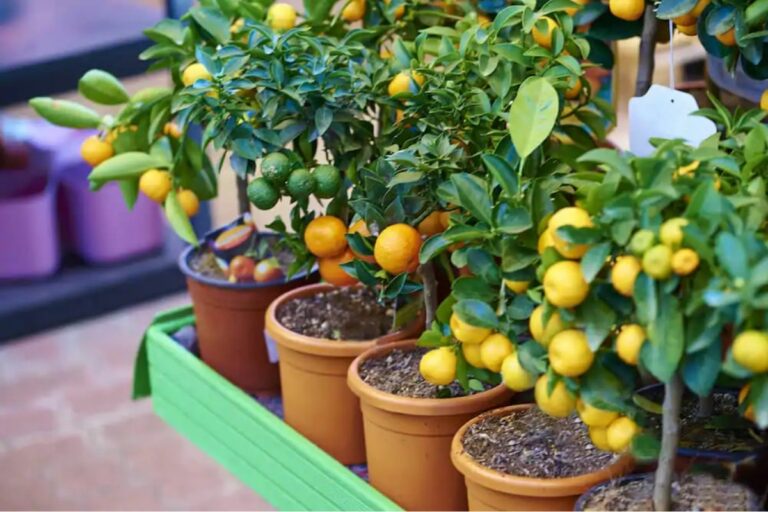Best Trees for Your Region
To grow a fruit orchard, it is crucial to select trees suitable for your region’s climatic conditions and take care of them properly to ensure their healthy growth. Here are some popular fruit trees in different areas:
Apple Trees: Apple trees can be grown under various climatic conditions. These plants thrive well on well-drained soils and require full sunlight. Choose varieties that suit your area’s climate, and you may think about planting several kinds to extend your harvest period through cross-pollination.
Example: While ‘Anna’ and ‘Dorset Golden’ are recommended for warmer areas, ‘Honeycrisp’ and ‘Granny Smith’ make great choices depending on the weather of such temperate zones.
Pear Trees: Pear trees can withstand cold climates and are best grown in temperate regions. They grow best in well-drained soil with total sun exposure. Planting different pear varieties improves pollination, just like apple trees do.
Example: For its resilience and fruit quality, ‘Bartlett’ and ‘Bosc’ are favourite among many people.
Peach trees flourish well in warm temperate climates provided the soil drains adequately, besides getting enough sunlight, i.e., at least six hours daily. Peach varieties have different requirements concerning chill hours (hence longer chilling periods) required before they start bearing fruits; therefore, choose a variety matching your cool hour needs or “chill hour, ” defined as an hour at temperatures below 45°F.
Example: Redhaven is excellent for regions with good chill hours but not too cold tropical areas, while Elberta is suited to regions with enough cooling units.
Cherry Trees: Cherry fruits come in sweet or tart cherries, adapted to colder environments. Sweet cherries should be planted in areas that experience mild winters and warm summers, while sour cherries are known to be hardier and can survive in colder climates. They prefer well-drained soils and plenty of sunlight.
Example: ‘Bing’ or ‘Rainier’ are popular varieties of sweet cherries, while ‘Montmorency’ is widely grown as a tart cherry.
Tips for an Orchard Wellbeing
To make sure your fruit tree orchard remains healthy and fruitful, follow these tips when planting, taking care of it and performing maintenance duties
Choosing a Planting Site: Choose a suitable location with well-drained soil, total sun exposure and enough space for a tree to grow. Avoid sites with heavy clay soil or poor drainage.
Example: A south-facing slope promotes better air circulation and prevents diseases caused by frost.
Soil Preparation: Test the soil’s pH level before preparing it. Most fruit trees are slightly acidic to neutral soils (pH 6.0-7.0). Add organic material such as compost or rotted manure to improve soil fertility and structure.
Example: Adding compost enables more fertile soil that drains appropriately, supporting healthy root growth.
Planting Trees: Fall or early spring, when the weather is cool and trees are dormant, is the best time for planting fruit trees. Make a hole wide and deep enough to adapt the tree’s root system. Place the tree in the hole, spread its roots and backfill with soil. Water thoroughly, then mulch around the base to retain moisture and suppress weeds.
Example: Mulching about 3-4 inches thick helps conserve soil water, thus reducing weed pressure.
Pruning: Annually trim your fruit trees to keep their shape and remove dead wood, among other things, where necessary, thus promoting healthy growth, e.g., air circulation; more sunlight penetration leads to increased production of fruits. Different pruning techniques apply depending on which fruit tree is being pruned.
Example: Open-center pruning for peaches and plums promotes better air circulation and sunlight exposure.
Watering: Remember to water fruit trees consistently, particularly during arid spells. Frequent shallow watering is less good than deep infrequent watering. Apply a soaker hose or drip irrigation system for direct root zone water supply.
Example: Water deeply once a week, promoting drought tolerance and profound root growth.
Fertilizing: In spring, fertilize fruit trees with slow-release, balanced fertilizer. Avoid over-fertilization, which leads to more vegetative growth at the expense of fruit production.
Example: For fruit trees, 10-10-10 fertilizer provides all the essential nutrients in equal proportions.
Pest and Disease Management: Be watchful for pests and diseases that affect your tree’s health and respond promptly. Use organic or chemical control measures as required and practice good orchard hygiene by removing fallen leaves, fruits and debris.
Example: Control of overwintering pests can be carried out through applying dormant oil late in winter.
Conclusion
When these tips are followed, and proper care is given, you can have a healthy, productive fruit tree orchard that will provide fresh, homemade fruits for many years. A well-tended orchard adds beauty to your garden while giving you the personal satisfaction of growing your own tasty and healthy fruits.
Explore More Gardening Tips and Ideas
- Growing Bonsai: Tips for Miniature Tree Enthusiasts
- Buying Bonsai: Tips for Selecting Your Perfect Tree
- Bonsai Potting: Essential Tips for Tree Care Success
- Bonsai Maintenance: Essential Care for Tiny Trees
- Mastering the Art of Shaping Bonsai: A Beginner’s Guide
Source: Growing A Fruit Tree Orchard


